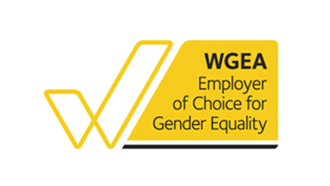- within International Law topic(s)
- in United States
- in United States
- within Technology, Media, Telecoms, IT, Entertainment, Government and Public Sector topic(s)
- with Senior Company Executives, HR and Inhouse Counsel
- with readers working within the Law Firm industries
This article was first published in The Australian on 14 May 2025.
Australia is well positioned to strengthen its standing as a reliable and competitive hub for global investment. In a world marked by uncertainty, its institutional strength, regulatory consistency, and history of innovation remain compelling drawcards.
The post-election landscape brings renewed political certainty - creating a window to advance meaningful tax reform. By modernising the tax framework, Australia can sharpen its appeal to international investors and foster a stronger environment for innovation-led growth.
But is Australia's current tax policy supporting or hindering its competitiveness as a destination for investment?
Advancing technology, an increasingly interconnected global economy, and deepening concerns around societal issues such as access to housing, medical care and energy have created an environment that is ripe for innovation. Some tax incentives are designed to support this. For example, the research and development (R&D) tax incentive remains a vital part of Australia's innovation ecosystem and continues to support significant investment in new technologies, products and capabilities.
However, businesses are encountering increased scrutiny from both the ATO and AusIndustry, as the government ensures that claims meet eligibility requirements. Many report that the claims process has become more difficult to navigate, particularly for companies investing in complex, long-term R&D programs. As a result, innovation and investment in R&D have been reducing over the last decade, with Australian investment in R&D now only 1.7% of GDP - well below the OECD average.
Foreign capital plays a critical role in investment in Australia. Many major projects and innovations, including built-to-rent housing, student accommodation, private equity investments and large infrastructure deals, are funded wholly or largely by offshore capital.
These projects often rely on foreign investment to be viable - but Australia's tax settings risk becoming a disincentive. Rules around thin capitalisation, capital gains tax and stamp duty are creating friction for global investors looking to back long-term, transformative projects.
A tightening tax administration approach and increased ATO scrutiny are adding to these challenges. There is now a clear focus on expanding anti-avoidance measures and increasing scrutiny on multinationals across areas such as withholding tax, intangibles, thin capitalisation and R&D.
Adding further complexity is the new foreign investment framework overseen by the Foreign Investment Review Board (FIRB). Although it is intended to make investment easier, some measures risk having unintended consequences by disincentivising necessary investment. For example, a recent ban on foreign entities purchasing residential houses - designed to increase housing access for Australian citizens - also restricts foreign investment in critical infrastructure like childcare, health services and data centres, which the Australian community needs.
Tax-related issues are also now being examined more closely in FIRB reviews, even before an investment is made, adding another layer of uncertainty for inbound investors.
The result of these collective policy settings is that Australia is becoming a less predictable place to invest. Over the past decade, Australia's approach has made foreign investment - and with it, innovation, research and development - harder.
Despite successive governments' good intentions, there is a significant disconnect between what Australia needs to progress and how our policy settings operate.
The good news is that foreign capital is still flowing into Australia - although deals are now taking longer than they used to. Investors are factoring in longer FIRB processes, additional questions on tax structuring, and more complicated investigations.
Multinationals are becoming more proactive in ensuring they are "audit ready" at all times.
The key question is: where is the tipping point for foreign investors to decide that Australia is too hard to invest in? And what opportunities are we missing out on by maintaining these barriers?
With the election now behind us, the opportunity for meaningful reform is clearer than ever. Australia's appeal as an investment destination can continue to thrive - but only if we seize this moment to get our policy settings right. Tax reform doesn't mean abandoning integrity or oversight. It means ensuring that settings actively support Australia's long-term economic ambitions. With clear rules, targeted incentives and administrative consistency, we can create a tax environment that protects the base while also attracting the capital we need to compete globally.
As the global race for innovation-led growth intensifies, Australia's ability to fine-tune its tax approach - while maintaining trust and transparency - may prove critical to our long-term economic resilience.
The content of this article is intended to provide a general guide to the subject matter. Specialist advice should be sought about your specific circumstances.
 |
 |
| Lawyers Weekly Law firm of the year
2021 |
Employer of Choice for Gender Equality
(WGEA) |


